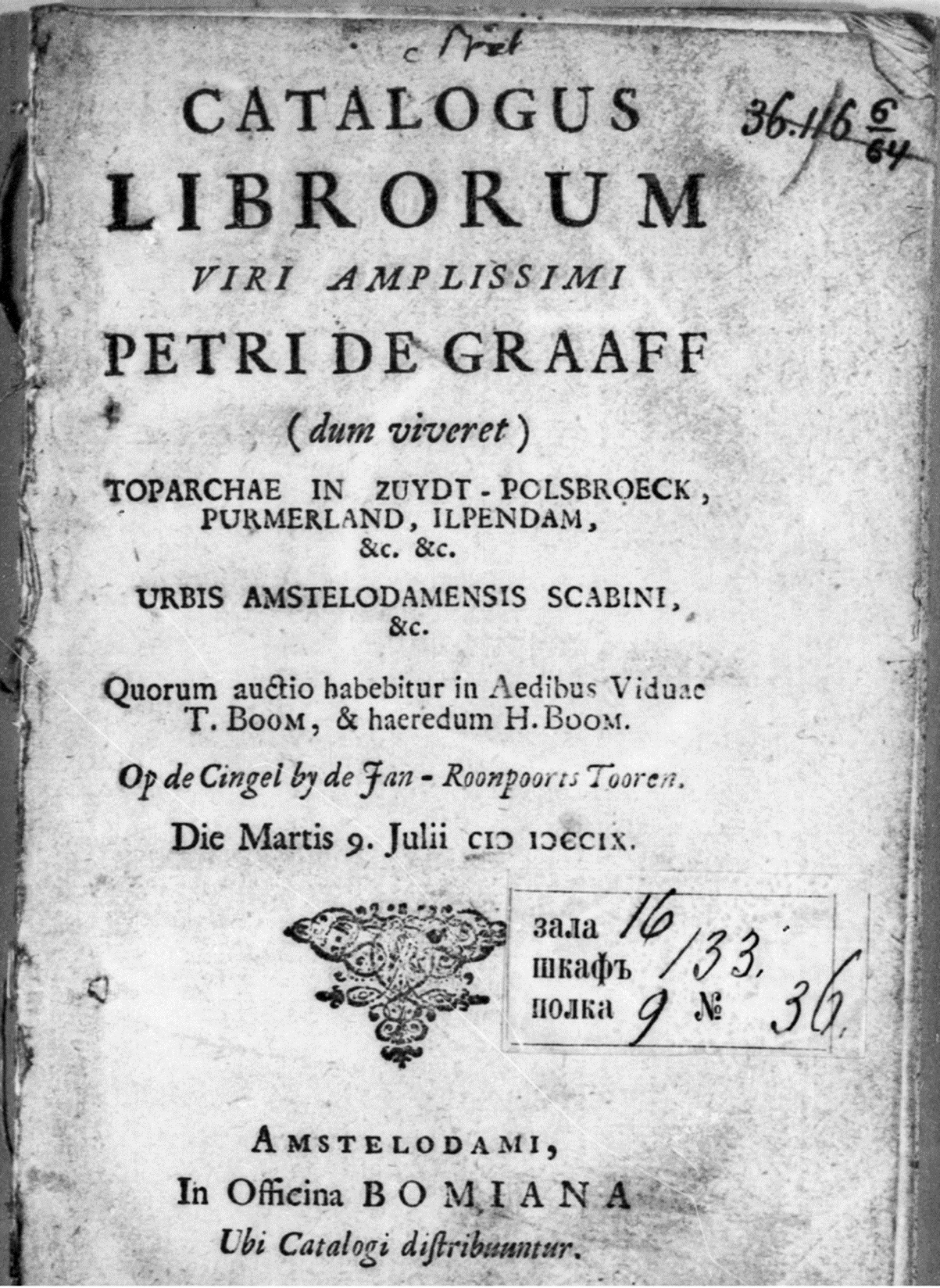
(Brill Book Sales Catalogues Online, NL: 16.133.9.36)
What was the appearance of a private library in early modern Amsterdam, and what types of books could be found in there? We can investigate these questions by looking at Pieter de Graeff’s library and his book auction catalogue. This catalogue lists more than 2300 books. Several characteristics of this collection point to a learned humanistic library. Law, theology and classics cover about 50% of the total, and 64% of the books are written in Latin, followed by Dutch and French. We’re also looking at a quite old collection: most of the books for which the year of publication is given in the catalogue are dated before the half of the seventeenth-century and this is representative of the whole collection. The question that arises is then: Do all this book truly represent Pieter de Graeff’s reading interests?

Researching auction book catalogues presents several known challenges. One of the most significant is determining how accurately these catalogues reflect the book collection of the individual in question. Furthermore, these catalogues offer only a single snapshot of a book collection, typically taken at the end of a person’s life, with the processes leading to its creation often being unclear and untraceable. Consequently, when we utilize these sources, we are invariably faced with questions such as: Did this person actually read all these books? Were they, perhaps, inherited from someone else and never actually opened? What other books did this person possess? And under what circumstances were they added to the collection?
In the case of this library additional information useful to (partially) answer these questions come from an abundant archival documentation which comprises Pieter de Graeff's own almanacs and his probate inventory. The monograph Pieter de Graeff (1638-1707) and his treffelyke bibliotheek: Exploring and reconstructing an early modern private library as a book collection and as a physical space (Leiden: Brill, 2025), delves into this to sketch personal profiles of Pieter and his family members, reconstruct their lives and their study paths. The cross-referencing of pieces of information from various archival sources has made it possible to propose links that connect some of the books in the catalogue to some members of Pieter’s family. Moreover, the monograph investigates the physical space of Pieter’s private library (the 'boeken kamer') in his family house at Herengracht 573. The resulting 3D reconstruction hypothesis is visualised in this 3D scholarly edition.
The selection of books showcased in this scholarly edition highlights a variety of titles that cover a broad spectrum of subjects, ranging from historical accounts to medical treatments. Please be aware that the placement of each book on the shelves in the 3D reconstruction hypothesis of the library is hypothetical, as no records have survived to indicate the original arrangement of books in this library. However, the format of each book has been considered to assign it to the appropriate shelf. As discussed in more detail in the monograph, not all the books listed in the catalogue were housed in this room. There were other areas within this house, and possibly in other houses, that served as storage spaces for these books.
Curious to search through De Graeff's book auction catalogue by yourself? You can consult the annotated transcription of the entire book auction catalogue here.
Written by Chiara Piccoli